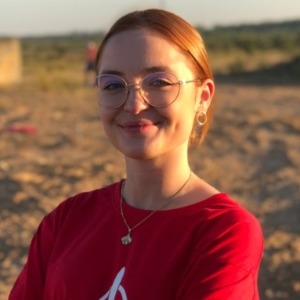Title : K peptide and osmolytes in solution spectroscopic and theoretical studies
Abstract:
K-peptide (GILQINSRW) – a short 9 amino acid fragment of the hen egg white lysozyme has the ability to form amyloid structures, thus it can serve as a model for studies of interactions between pathological amyloid structures and various compounds generally known as osmolytes. Two of them – trimethyl-N-oxide (TMAO) and dimethylsulfoxide (DMSO) has been selected on the basis of their structural simplicity and known influence on proteins. TMAO is a strong to moderate stabilizer which promotes aggregation, DMSO is a popular anti-freeze agent. Our goal was to get an overview of possible interactions in aqueous solution of both K-peptide and on of osmolytes. ATR-FTIR spectroscopy (Thermo Nicolet 8700 equipped with single reflection diamond cell GoldenGate ATR accessory) was used to analyse weak interactions in solutions. Due to relatively low concentration of the K-peptide it was not possible to study directly its vibrational structure, instead we had to focus on the shape and shifts of vibration bands of TMAO or DMSO in solutions. The concentration of osmolytes was kept constant to diminish the influence of their dissolution (it could potentially change interaction between the same solute molecules in a solution and affect the shape of FTIR spectra) while concentrations of the K-peptide varied. A variant of the derivative spectra method was used to isolate and boost spectroscopic signals indicating interactions. Some of the changes visible in spectra were similar to those caused by hydration/dehydration of osmolytes, indicating an important role of the solvent in interactions. Moreover, we used DFT calculations to assign and confirm the peak shifts. For a practical reason, N-acetyl-glycine-methylamide (NAGMA) was used as a model of the full K-peptide. All calculations were performed with the GAUSSIAN 09 v.D1 software using a well-established set of DFT method and basis set – B3LYP/6-311++G(d,p), including the GD3-BJ dispersion correction. This work was funded by the National Science Centre, Poland (grant 2017/26/D/NZ1/00497). Calculations were carried out at the Academic Computer Centre in Gda?sk.
Audience take-away:
- Weak interactions between various solutes can have an immense influence on properties of peptides and proteins in solutions.
- Direct interactions are generally unfavorable in such solutions.
- Water plays an important role as an intermediary between solutes.




